Search Results
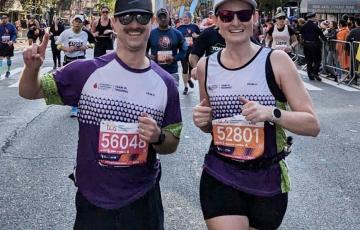
Courtney
In March 2022, I began experiencing unusual symptoms of fatigue, nausea, persistent infections, and bloody noses and gums, but I didn’t think much of it. Following a lucky-timed appointment with my primary care doctor and multiple blood tests, I was diagnosed with acute lymphoblastic leukemia (ALL). Cancer isn’t something an otherwise “healthy” 27-year-old thinks will come out of a doctor’s mouth.

Kristen
In the fall of 2012, Kristen Comer noticed her energy level wasn't as high as it had been, but she thought nothing of it. It wasn’t until the fall of 2013 when she had unidentifiable bruises on her body and no change in her energy levels, that her general practitioner drew labs to determine a diagnosis. After three panels of blood work, Kristen was diagnosed with chronic myeloid leukemia (CML) on December 31, 2013.

Lisa
As a new graduate with a master’s degree in psychology, I, among many others, am applying to jobs out in the 'real world.' Recently, one of the job applications asked me to describe myself in three words. My answer consisted of adjectives such as determined, capable and diligent. The one word that best describes me though is one I did not say, and that is survivor.
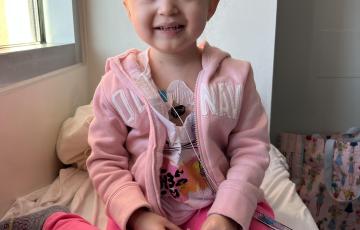
Vera
Vera was diagnosed on July 23, 2022. Her symptoms started as typical flu-like, lethargic, loss of appetite, and a fever. After three days of a fever and no one in the house showing symptoms, we took her to the pediatrician and were told she likely had a virus and to return in a week or so if symptoms didn’t subside. Over the next three days, her symptoms worsened (pale skin, a fever of 101 with Tylenol, bruises, and no appetite), and we took her to a medical professional every day, including the ER.
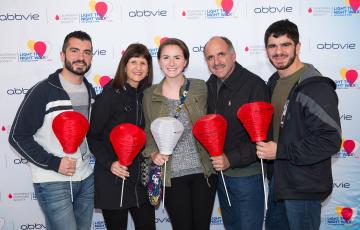
Gianna
My story began nearly seven years ago on February 28 when I received the call from my doctor and heard those dreaded words, “You have cancer.” A week prior, I had gotten a lymph node biopsy for a lump that randomly grew on my neck. As a healthy 19-year-old, cancer was the furthest thing from my mind, and receiving a diagnosis of Hodgkin lymphoma (HL) was simply unbelievable to me and my family. Hearing this news began a three-week blur of diagnostic testing and meetings with oncologists, fertility specialists, and surgeons before my first chemotherapy treatment on March 23, 2015.

Trisha
In November 2019, Trisha and her husband were thrilled to have given birth to her second daughter. At this time, she went to visit her OBGYN for her 6-Week Postpartum Exam, and to her surprise, her doctor noticed she had an enlarged spleen and liver. She was immediately instructed to go to the emergency room, where she was admitted for one week. After a bone marrow biopsy, Trisha was diagnosed with plasma cell leukemia (PCL). Three days later, I went to another follow-up with my oncologist.

Lorna
I was diagnosed with Stage 4 NH large B-Cell primary hepatic lymphoma in April, 2013. I was told by my doctor that this was a very rare form of lymphoma with less than 200 cases in the US. I had surgery to remove 90% of the right lobe of my liver as the tumor was very large at 16cm (initially I was diagnosed with liver cancer until they removed the tumor and the pathology revealed that it was NH lymphoma).
Stem Cell Transplantation
For some patients who are in remission and can tolerate intensive chemotherapy, the doctor may recommend stem cell transplantation during the consolidation phase of chemotherapy.
Diagnosis
Diagnosing juvenile myelomonocytic leukemia (JMML) usually involves ruling out other similar diseases such as chronic myelomonocytic leukemia and chronic myeloid leukemia, especially if your child is older than 6 years. Doctors commonly use blood tests and bone marrow tests to diagnose JMML.
The tests used to diagnose JMML include:

Todd
This cause is dear to me because my grandmother, Anne Zavorskas, passed away several years ago from Hodgkin’s disease--a form of leukemia. Also, many years ago, my mentor’s son, Ryan Hurley, had a recurrence of leukemia, which he was first diagnosed with at the age of three. He died at the age of 19. Unfortunately, leukemia at the time caused more deaths than any other cancer in children under the age of 20. These instances led me to my desire to donate time and money to this particular charity. I have volunteered my time and fundraising expertise ever since.
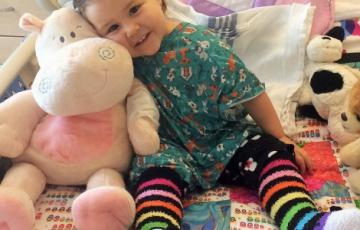
Lyra
Lyra is a confident three year old who spreads joy wherever she goes! She loves to sing, dance, draw, snuggle while reading stories and is rarely seen in anything but a princess dress. If you happen to pass Lyra at the store, she will most certainly ask you your name and probably tell you all about her favorite my little pony or what she ate for breakfast.
Chronic Lymphocytic Leukemia
Chronic lymphocytic leukemia (CLL)- Is a type of blood cancer that begins in the bone marrow
- Can progress either slowly or quickly depending on the form it takes
Click here to access CLL statistics.

Douglas
My story begins almost 24 years ago in 1996, when I was diagnosed with cancer, chronic lymphocytic leukemia (CLL). Back then, there was no cure for CLL except for a bone marrow transplant (BMT), but that procedure only had a survival rate of 50%, not very attractive odds. My prognosis was I had anywhere from six to 15 years without a BMT.
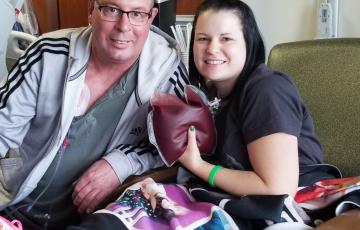
Don
In January of 2016, my dad was diagnosed with stage 4 non-Hodgkin lymphoma (NHL). He was unresponsive to treatment. He went into remission, but it quickly came back. The clinic said they couldn’t do anything more, so he was referred to the University of Minnesota for a clinical trial. The treatment included me, as his daughter, donating my T-cells. The clinical trial was helpful but didn’t get the results he needed, and cancer came back.
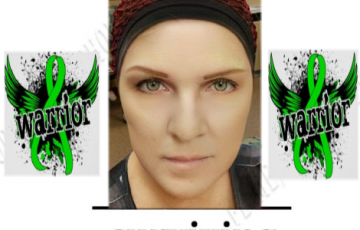
Nancy
Being a lymphoma survivor means that you have lived through something very challenging. There is no doubt that cancer is one of the most challenging diseases. The treatments for this disease are very intense physically, mentally, and emotionally. As a retired oncology registered nurse, I saw the pain and desperation in the eyes and lives of my patients and their families. Never imagined that I was to become a cancer patient myself.
Signs and Symptoms
Signs and symptoms are changes in the body that may indicate disease. A sign is a change that the doctor sees during an examination or on a laboratory test result. A symptom is a change that a patient can see and/or feel. A person who has signs or symptoms that suggest the possibility of leukemia is usually referred to a specialist. This is a hematologist-oncologist. A hematologist-oncologist is a doctor who has special training in diagnosing and treating blood cancers such as leukemia, lymphoma and myeloma.
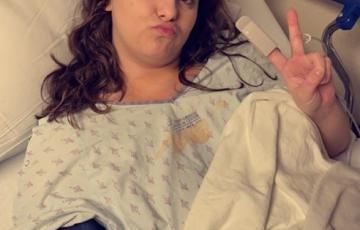
Carly
November 25, 2022 ― the worst day of my life, the day I received my official cancer diagnosis, stage IV Hodgkin lymphoma (HL).
Leading up to this day, I was always a healthy, active young lady. I was 23 years old and eager to start this next phase in life. Exciting things were happening. We were fairly new homeowners, I had just changed jobs/occupations, and I married the love of my life in October.
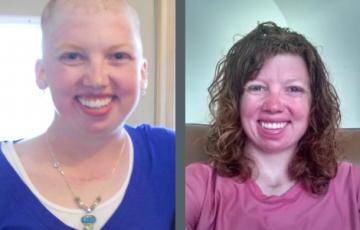
Nicole
It all started back in early January 2013. I went to the local clinic in town because I was having pain in my upper left chest. Being young, I wasn't too concerned about it being a heart problem and left the clinic with the diagnosis of torn cartridge. The doctor said it would heal and I should take ibuprofen to ease the pain.

Josie
I was diagnosed with acute myeloid leukemia (AML) in July 2024 at age 28.
I was working at a veterinary clinic when I started noticing splotches appearing on my skin. I thought it was maybe a case of ringworm I had contracted from one of the animal patients. I was also losing weight and suffering from intense dizzy spells daily.
I ignored the signs my body was giving me until it was almost too late. I felt very sick, and my gums were swelling. I went to Urgent Care where they diagnosed me with COVID-19 and sent me home with some cough drops and a nasal spray.
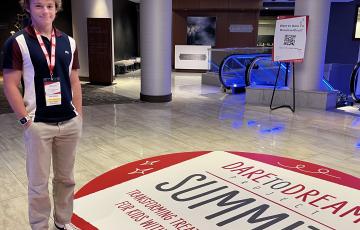
Will
In April 2021, as I was just starting to emerge from the COVID-19 pandemic, I started to feel unwell. I was suddenly very tired and could not finish a soccer match. My family and I decided to reach out to our family doctor and look into my fatigue; we were not worried at all. We attributed my symptoms to adolescence and growth, and so did our doctor at first.
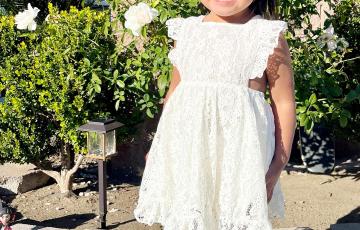
Nevaeh
Nevaeh was diagnosed with acute myeloid leukemia (AML+MLLr)+CNS chloromas on February 2, 2022, at 12 months old. Nevaeh first showed symptoms of high fevers, no appetite, and little to no energy. After a trip to the ER, a few tests, and x-rays, I was told Nevaeh had COVID and pneumonia. She was discharged with instructions to go back if her symptoms worsened. The following morning, Nevaeh’s health was declining. I called 911, and she was rushed to the ER and admitted to the pediatric unit.

Sonia
In an instant, my life changed. “You have chronic lymphocytic leukemia (CLL). There is no cure but patients can live for several years.” These were the words I received a few years ago at the age of 39 with three small children. I have been on an educational journey of self-discovery, cancer research, and patient advocacy ever since.
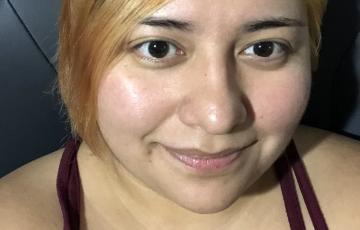
Brenda
Hello, my name is Brenda. I am 26 years old and have been in remission for three years now. Back in the very beginning of 2015, I started getting sick. I had been working in a daycare for a few months, so I just figured it was a cold. I didn’t get better. I eventually reached the point where I couldn’t breathe, and I was burning up, so I was taken to the hospital. That was the morning I will never forget. I was diagnosed with acute myeloid leukemia (AML). Getting the news that you have cancer isn’t an easy thing to believe. At first, you’re skeptical.